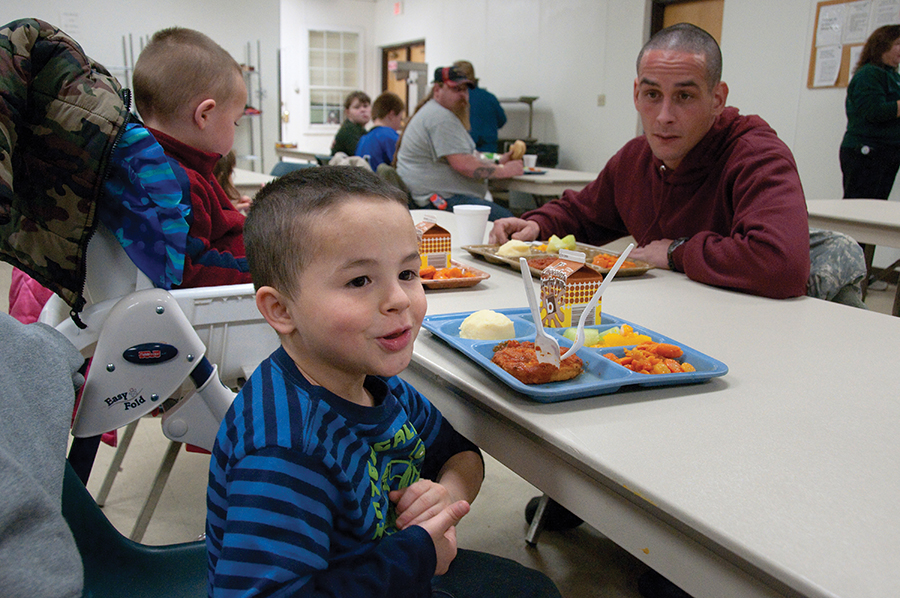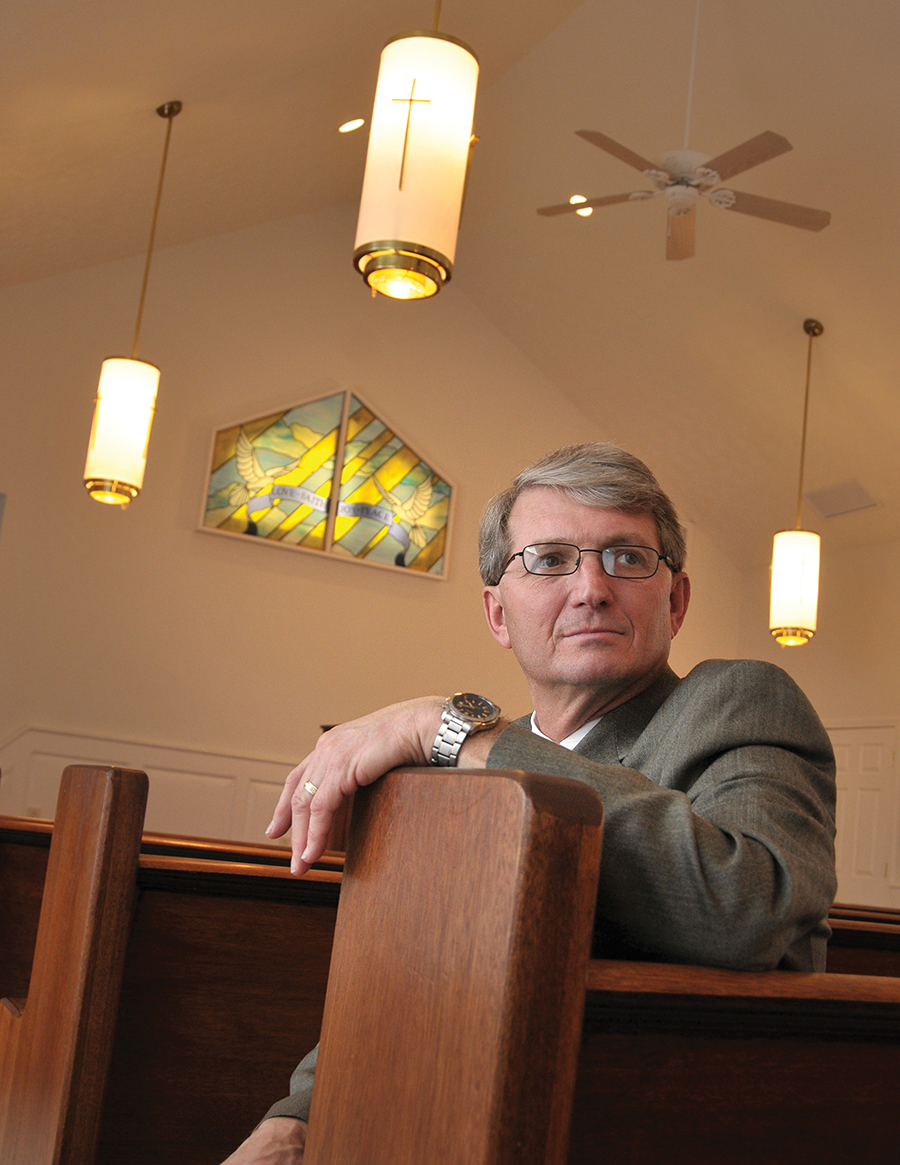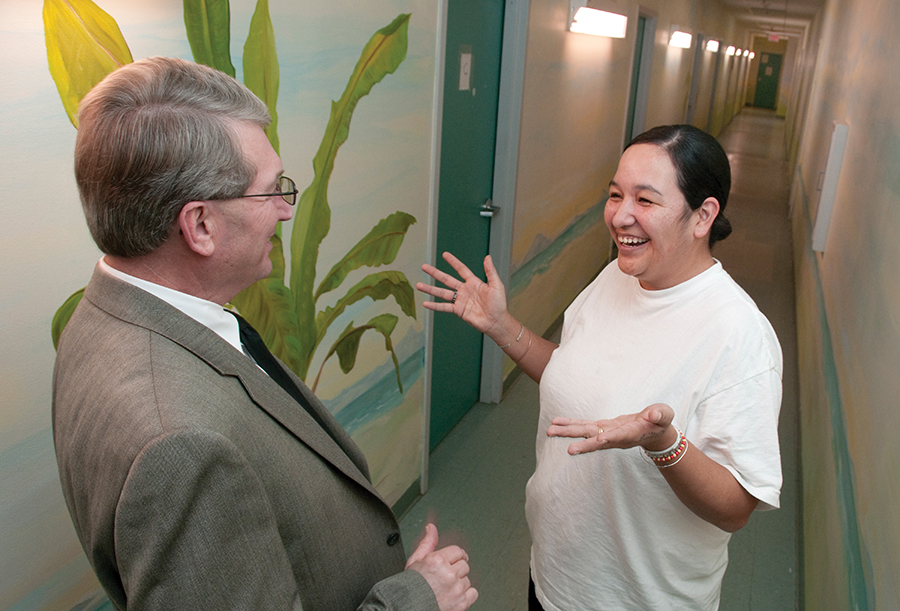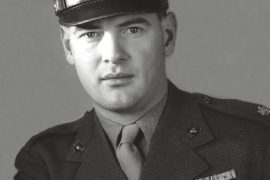The Huntington City Mission has been caring for Huntington’s homeless for more than 70 years.
By Katherine Reasons-Pyles
HQ 69 | WINTER/SPRING 2010
It is a typical March evening, and the weather is cold and wet. Downtown Huntington is virtually silent, save for the occasional sound of purposeful footsteps; people walk briskly to their cars, knowing that a warm house is waiting for them.
Then there are those who walk a little more slowly. No mid-sized sedan waits in a nearby parking garage to take them home. For one reason or another, they have lost essentially everything. However, thanks to the compassion and determination of Pastor Pete Davidson and the Huntington City Mission, they have a warm place to stay each night and meals to help them make it through the day.
The Huntington City Mission has been meeting the needs of the homeless in our community since 1939. It is the oldest homeless shelter in the area and currently provides housing to more than 125 residents, including around 30 children. Although its highest priority is to meet basic needs like food and shelter, the Huntington City Mission also seeks to meet the emotional, social and spiritual needs of the community it serves.

“The people who stay with us go from shaking and crying to having a semblance of a normal life,” said Davidson, the mission’s executive director, known to just about everyone as “Pastor Pete.” “When you see that somebody cares, it goes so much further than putting clothes on people, feeding them a meal and giving them a roof over their heads. It gives them hope.”
The mission is located on Tenth Street between Sixth and Seventh Avenues. The campus includes a men’s shelter, a shelter for women and families and an 18-apartment complex called Project Hope for long-term transitional living. Also on the premises is an 8-bed unit called Safe Quarters for chronically mentally ill homeless individuals.
The mission’s Community Feeding Program offers three meals a day, not only to the homeless people living at the mission but also to any low-income individuals who choose to come to the mission for meals. It provides more than 80,000 meals each year to those in need.

Driving past the mission, one cannot help but notice Funderburk Chapel, built in 2008. The chapel’s white bricks and red accents directly contrast the red brick buildings surrounding it. Davidson designed the structure himself and hired an architect to design the giant cross that marks the chapel’s entrance.
“As far as you can see – the fire department, the C&O depot, the Mayor Jean Dean building – the buildings are red brick with white accents,” Davidson said. “Our architect saw that, and when it came to the chapel, he said, ‘Pastor Pete, let’s reverse it.’ Isn’t that something? That somebody would think like that?”

The architect designed the chapel’s cross using cypress wood. Davidson said the leaning cross is there to remind everyone who enters and leaves that they must take up their own cross to follow Jesus. The chapel is named for Dr. James Funderburk, who was the superintendent at the Huntington City Mission for 19 years. Even after he retired, Funderburk continued to take an active role in the mission’s work until he passed away in 2007. His wife Shirley still lives in Huntington. Funderburk always said that it was the teaching and care he received at a mission in Tennessee that led him to his strong Christian faith and ministry.
Providing opportunities for worship is one of the mission’s founding principles; services are offered every day at 5:30 p.m. Area pastors volunteer to speak at the services, which residents at the mission are invited – but not required – to attend. Inside the chapel is a room reserved for bible studies, group discussions and lessons on discipleship. A painting on the wall, created by one of the mission’s residents, shows Jesus carrying a man who is unable to walk. The man is holding an empty bottle of alcohol.

“It shows that Jesus loves even them,” Davidson said. “Of course He does, and we know that. But they don’t always know that.”
Director of Operations Amy Dial said that above all else, the mission’s goal is to get its clients back into permanent housing.
“Our goal is to help them get back on their feet. If our clients seek spiritual help, it’s there. We offer it if they want it, but we don’t force them. We just want to show God’s love to them.”
She said the average resident at the mission has a history of substance abuse or drug dependency. Many of the mission’s clients have recently left a rehabilitation center and have just been reunited with their children; they stay at the mission until they can afford an apartment.
“At least half of our clients have a job,” she said, “but they can’t afford an apartment. They can’t afford a damage deposit or the utilities. They stay here until they’ve saved up enough money to live on their own.”
The Huntington City Mission offers educational and job searching services to all of its clients, helping them gather their birth records, state identification, proof of residence and any other documents they may need for their job search. At the mission’s on-site Learning Center, Christle Suiter – an adult education specialist – helps the mission’s clients learn to read and write, prepare for their GED Tests and learn how to use computers. Throughout the summer, Suiter helps clients of the mission learn to garden; she helps them plant seeds, grow vegetables and then use the vegetables in their meals, essentially teaching them how to grow their own food.
Carla Gillette, coordinator for Project Hope, said Suiter and the other program directors are an integral part of the mission’s work. “We have a case manager who works with all of our residents individually to help them find jobs, and we employ a children’s programmer who plans activities for the kids,” Gillette said. “Because the children have been out of school so much, moving from place to place, they’re often very far behind in school.”
“We continually advocate for our clients,” Davidson said. “Some of them have horrible situations. We set them up with an action plan that gives them the steps they need to take to get their lives – and their kids’ lives – back in order.”
Davidson said that everyone who moves out of the mission into permanent housing receives a set of sheets, towels and furniture.
“When they move out, they don’t have their own furniture. They don’t even have a fork and a knife to eat with,” he said. “The Tri-State community is so good to support us. They give us furniture, vehicles, houses; they’ll bring washers, dryers, refrigerators and bedroom suites. Thanks to everyone who donates, we are able to help our clients with the basic essentials when they move out to their own apartments.”
Vanetta Johnson, the mission’s finance director, said that 80 percent of the mission’s funding comes from community donations. Only 20 percent is provided by grants.
“We just came out of the Christmas season, the most giving time of the year,” she said, “but we have homelessness 365 days a year. We are so thankful that our supporters realize this and continue to help throughout the year, which enables the mission to serve the less fortunate of our community.”
To donate clothing or goods, please call (304) 523-0293. Donations can be dropped off from 9 a.m. to 5 p.m., Monday through Friday, at 624 10th St.
For a list of the mission’s special needs or to make a monetary donation online, visit their website here.





